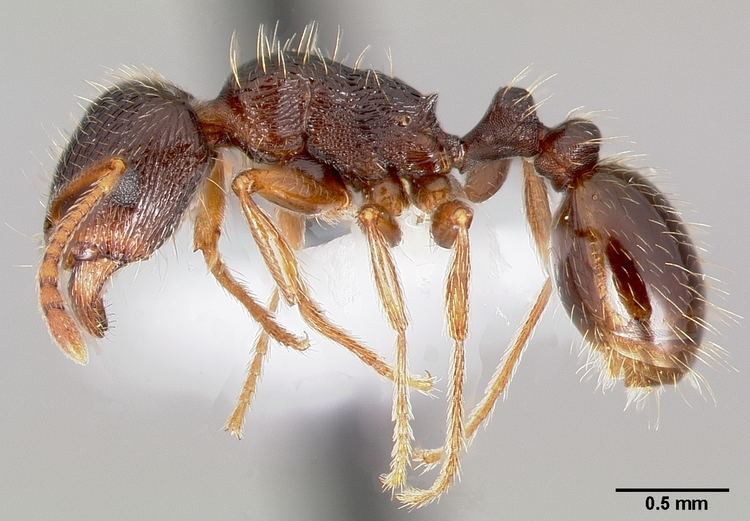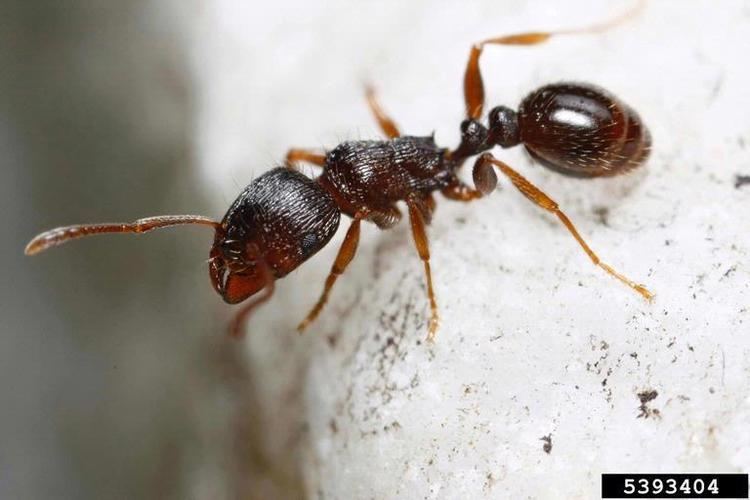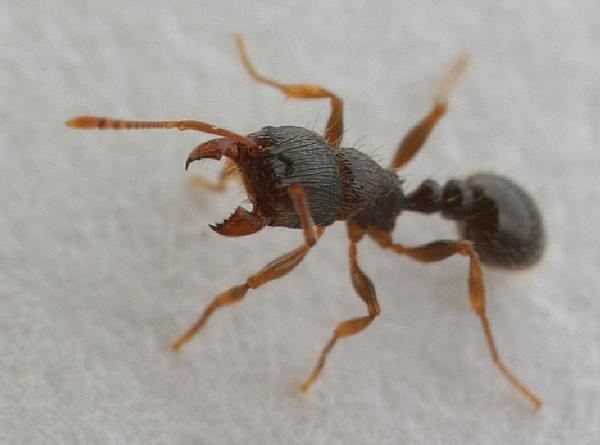Kingdom Animalia Order Hymenoptera Subfamily Myrmicinae Scientific name Tetramorium caespitum Higher classification Myrmica | Phylum Arthropoda Family Formicidae Genus Tetramorium Rank Species | |
 | ||
Similar Ant, Tetramorium, Tapinoma sessile, Insect, Pharaoh ant | ||
Pavement ants tetramorium antscanada tutorial
The pavement ant (Tetramorium caespitum) is an ant native to Europe, which also occurs as an introduced pest in North America. Its common name comes from the fact that colonies in North America usually make their homes in pavement. It is distinguished by one pair of spines on the back, two nodes on the petiole, and grooves on the head and thorax .
Contents
- Pavement ants tetramorium antscanada tutorial
- Pavement ants tetramorium caespitum at war
- Description
- References

During early spring, colonies attempt to conquer new areas and often attack nearby enemy colonies. These result in huge sidewalk battles, sometimes leaving thousands of ants dead. Because of their aggressive nature, they often invade and colonize seemingly impenetrable areas outside their native range. In summer, the ants dig out the sand in between the pavements to vent the nests.

Pavement ants were studied on the International Space Station in 2014.
Pavement ants tetramorium caespitum at war
Description

The pavement ant is dark brown to blackish, and 2.5–4 mm long. Like other ants there are the workers, alates, and a queen. Alates, or new queen ants and drones, have wings, and are at least twice as large as the workers.

The drone's only job is to mate with the virgin alates, and reproduction is at its highest in spring and summer. Tetramorium, like many other ants have nuptial flights where drones fly high up in the air and mate with new queens. The dealate, or newly fertilized slate, finds a suitable nesting location and digs a founding chamber called the clausteral chamber/cell. As the eggs hatch and the ants develop they will spend that time, about two to three months, tending to the queen of their colony. They will continue helping in the colony until they are a month old.

Older workers hunt and defend the colony. They will eat almost anything, including insects, seeds, honeydew, honey, bread, meats, nuts, ice cream and cheese. The pavement ant serves as host to the ectoparasitic Tetramorium inquilinum.

